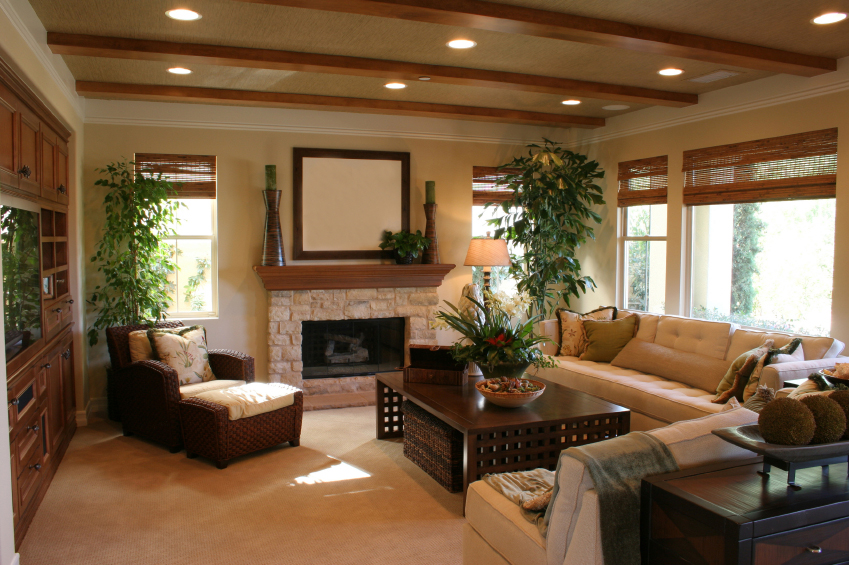Many indoor spaces have been refurbished to keep up with the modern trends. Turning old places into modernized cafes, art galleries, etc. is one of the common restoration practices. Even when it comes to home LED recessed lights are the only fixtures which makes any place go from boring to ambient.
Structure of Recessed Lights
A recessed light fixture is mainly used in small ceiling spaces ranging from 8 to 15 feet. It consists of:
Housing
The housing of recessed light fixtures is rated for different ceiling designs and types. The housing is the core component of the fixture and houses all electrical and optical components. It is safety rated against heat, shock and moisture. The different kinds of housings are mainly sub categorized under IC rated and NON IC rated.
- Airtight housing
- Sloped ceiling housing
- New construction housing
- Remodel housing
These categories enable the use of recessed lights in places where due to different conformations it is hard to use any other light fixture as well as bring about the ambient lighting into play to make the space more comfortable.

Bulb
Traditionally halogen lamps were used in recessed lights as they were brighter than most counterparts. But now LED recessed lights are highly favoured as their replacement due to their efficiency when it comes to bright and adjustable light with low cost and energy consumption.
LED lamps highly improve the ambience of any space with respect to its requirements.
Trim
The trim is the outermost visible part of the light fixture. It is available in many different designs and seizes to match with the sizing of the fixture. It provides finishing to the fixture and trims/directs light out of the fixture.
The different trim designs are
- Reflector trims, baffles trim for general lighting
- Pinhole trim, eyeball trim, gimbal trim for the task and ambient lighting
Tips to consider prior to installation
1. Work the layout
The planning of the layout is the first and foremost step when it comes to refurbishing any space. It is essential specifically in case of installing LED recessed light fixtures as these lights require drilling and cutting holes in the ceiling surface, which is quite irreversible if the installation is not done properly.
The layout is designed after carefully taking all the measurements of the room such as
- Area of the room
- Ceiling height
It helps in determining the:
- Size of the fixture
- Lumen output per fixture
- Number of fixtures
- Total lumen requirement
- Placement of the fixtures (distance, arrangement)
- Trim size and design as per the division of zones within the room
Once the layout is figured out, it is easier to start with the installation process as well as making the purchase of appropriate light fixtures.
2. Choose the colour temperature
LED recessed lights allow a number of customization to create the ambient lighting layout specific to each space such as rooms, kitchens, lounges, cafes, museums, galleries, etc.
LEDs are available in different correlated colour temperatures producing warm yellow to cool white light. The brightness isn’t impaired except the colour spectrum is variable. It falls on a kelvin scale ranging from 2500K to 6000K. The scale is divided as:
2500–3000 K: warm yellow light.
3000–4000 K: white light with a hint of warm tones
4000–6000 K: white to cool white light
These temperature ranges allow the installation of these lights in several spaces while aligning with the requirements depending on the type of space whether it is lounging space, task space or any display.
3. Use cut down voltage
The housing of LED recessed lights can be paired with alternate voltage for ambient and task lighting. In this way, these lights run on altered voltage producing different light within the same room. This is mainly done when the layout requires accent or task lighting other than general lighting. It also saves a lot of energy.

4. Layer the Light Using Trims
Although these lights are general ceiling lights and in most spaces, they are used as a general ceiling lights only but the different trim designs allow light layering. This is the core feature which makes these fixtures stand out. They allow experimentation through various trim designs and help create a controlled lighting layout for any space. The trim designs allow several layers and designs such as;
- To highlight a wall, wall wash trim is used
- To highlight miniature pieces or decorative items pinhole, eyeball trims are used to create a spotlight effect
- For task areas, to enhance focus to details, eyeball and gimbal trim is used.
These are independent fixtures which can easily create all three layers of lighting with a little bit of careful planning prior to purchase.
5. Pair with other fixtures
Even though these fixtures can function independently, they still leave a room to be paired with other decorative light fixtures. In homes, offices, cafes, galleries there is always room for extra lighting and the safest approach is to go with dim lighting which can be paired with chandeliers, pendants, scones. The placement is done by equally distributing the light within separate zones. For example, when paired with chandeliers, recessed lights can be arranged along the corners of the room equidistant to each other and the chandelier in the centre.
The pairing opens a lot of possibilities one can create within a room and many different layouts can be created. The key is ambience which is achieved by equal distribution of light and the controlled lighting features of recessed lighting allow a lot of diversity when it comes to renovation within an indoor space.
Conclusion:
LED recessed lights are versatile and durable light fixtures, the tips follow through their functional aspects which enhance their functionality and life span. There are a variety of light layouts which can be maneuvered and this is why lighting architects prefer these fixtures over any other lighting fixtures for decorative lighting and in renovation techniques.






